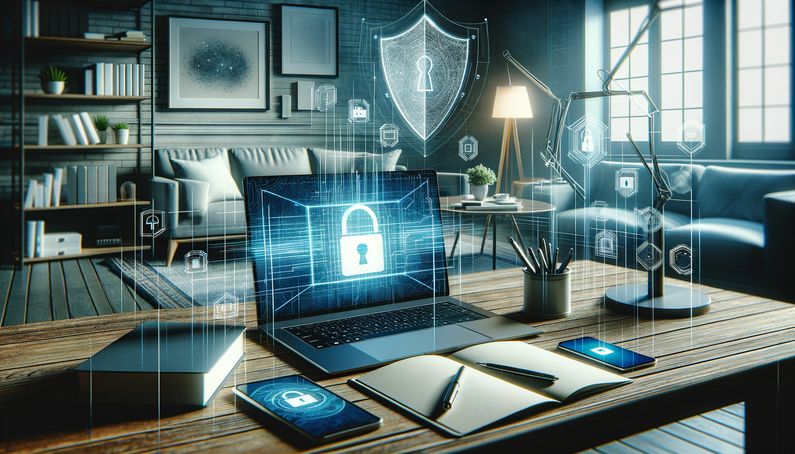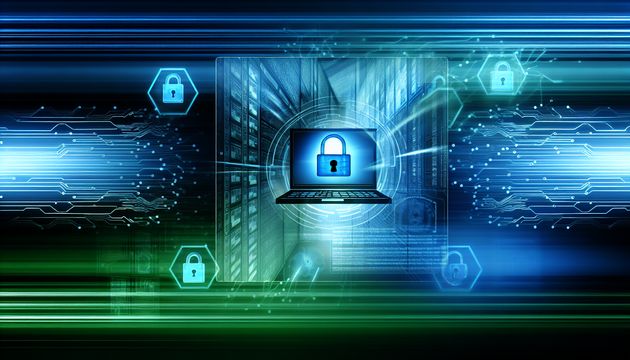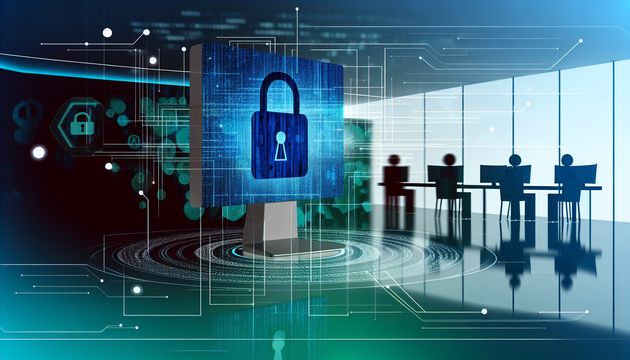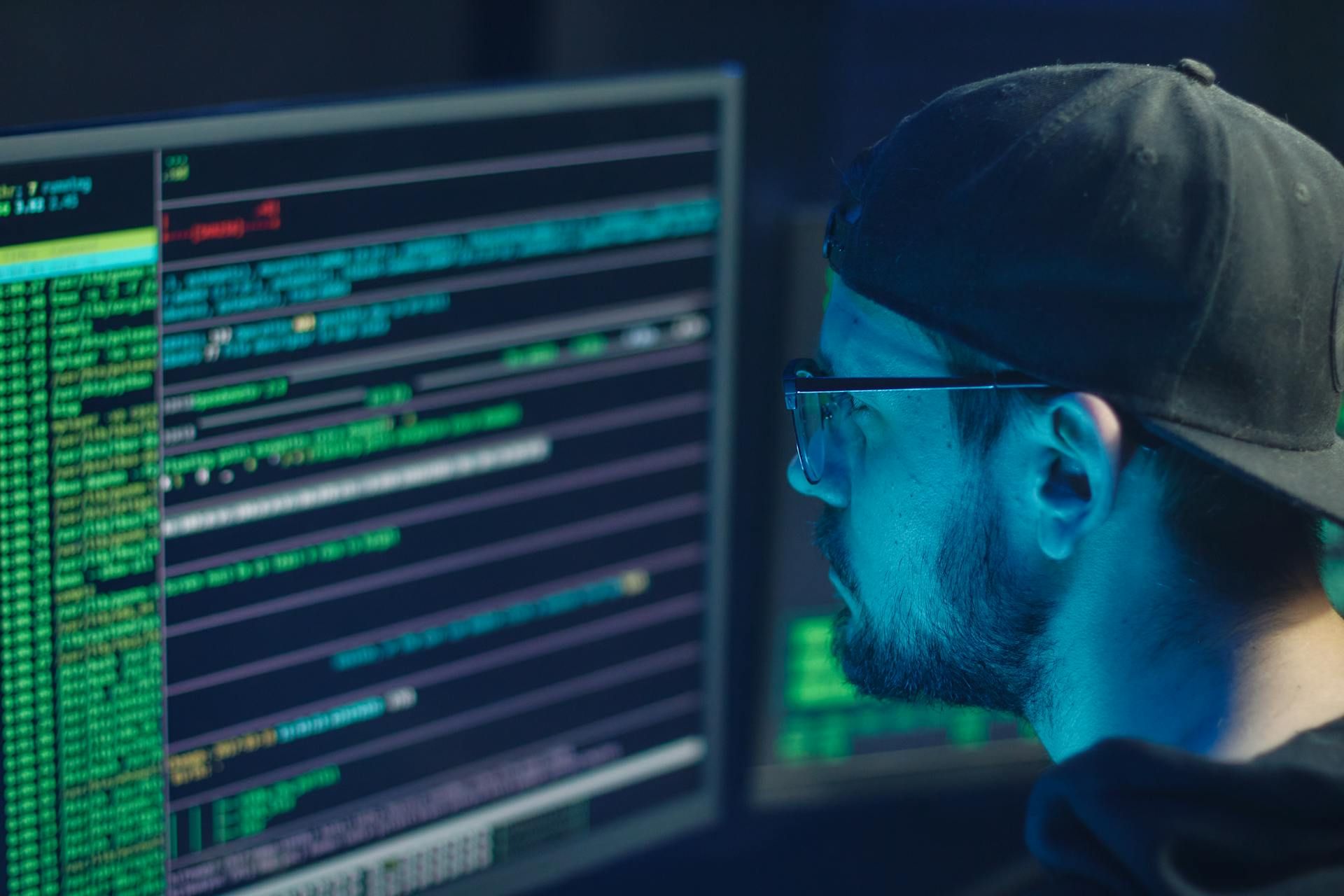
Best Practices for Cybersecurity in Remote Work Environments
The rapid shift to remote work, accelerated by global events and technological advancements, has fundamentally transformed the cybersecurity landscape. As organizations continue to embrace flexible work arrangements, they face a myriad of cybersecurity challenges that threaten the integrity of their data and systems. Remote work environments, often reliant on less secure home networks and personal devices, present an expanded attack surface for cybercriminals. According to a 2024 report by SentinelOne, a significant portion of remote workers utilize personal Wi-Fi networks, many of which are inadequately secured, thereby increasing vulnerability to unauthorized access and malware attacks. Furthermore, endpoint devices, which are frequently targeted in remote work settings, accounted for a substantial percentage of breaches, as noted by Creative Networks. In response to these threats, organizations must adopt comprehensive cybersecurity strategies that encompass advanced technologies and employee training to safeguard their remote workforces effectively.
Key Cybersecurity Risks in Remote Work
Increased Vulnerability of Home Networks
Remote work environments often rely on home networks, which lack the robust security infrastructure of corporate networks. Home routers are frequently left with default settings, making them susceptible to attacks such as unauthorized access and malware infiltration. A 2024 report by SentinelOne highlighted that 70% of remote workers use personal Wi-Fi networks, with 40% admitting they have never updated their router firmware. This creates a significant attack surface for cybercriminals.
To mitigate these risks, organizations should enforce policies that require employees to use Virtual Private Networks (VPNs) and ensure their home routers are secured with strong passwords and updated firmware. Additionally, implementing network segmentation at home—for example, separating work devices from personal devices—can reduce the risk of cross-contamination in case of a breach.
Endpoint Device Exploitation
Endpoint devices, such as laptops, smartphones, and tablets, are primary targets for cyberattacks in remote work settings. These devices often lack enterprise-grade security measures, making them vulnerable to malware, phishing, and ransomware attacks. According to Creative Networks, endpoint vulnerabilities accounted for 60% of remote work-related breaches in 2024.
Organizations must prioritize endpoint security by deploying Endpoint Detection and Response (EDR) solutions and enforcing strict device usage policies. Multi-Factor Authentication (MFA) should be mandatory to prevent unauthorized access, and employees should be required to use company-managed devices with pre-installed security software.
Phishing and Social Engineering Attacks
Phishing attacks have surged in remote work environments due to the increased reliance on email and digital communication tools. Cybercriminals exploit this dependency by crafting sophisticated phishing emails that mimic legitimate sources. A 2025 report by Splashtop revealed that phishing attacks targeting remote workers increased by 35% in 2024, with an average cost of $4.91 million per breach.
To combat phishing, organizations should conduct regular employee training sessions to raise awareness about identifying phishing attempts. Email filtering solutions and real-time threat detection systems can also help reduce the likelihood of successful attacks. Furthermore, implementing a Zero Trust security model ensures that even if credentials are compromised, attackers cannot access sensitive systems without additional verification.
Shadow IT and Unapproved Applications
The use of unapproved software and applications, commonly referred to as “shadow IT,” has become a significant cybersecurity risk in remote work settings. Employees often turn to third-party tools for convenience, bypassing IT departments and exposing the organization to vulnerabilities. A study by ZenGRC found that 45% of remote employees use at least one unapproved application for work-related tasks.
Organizations must establish clear policies regarding the use of software and enforce them through regular audits. IT departments should provide approved alternatives for commonly used tools and monitor network traffic for unauthorized applications. Endpoint management solutions can also help identify and block shadow IT activities.
Data Leakage and Insider Threats
Remote work environments increase the risk of data leakage, whether intentional or accidental. Employees may inadvertently share sensitive information through unsecured channels or store it on personal devices without proper encryption. Insider threats, both malicious and negligent, also pose a significant risk. According to Host Duplex, insider threats accounted for 34% of data breaches in 2024, with remote work being a contributing factor.
To address these risks, organizations should implement Data Loss Prevention (DLP) solutions that monitor and control the movement of sensitive data. Role-based access controls should be enforced to limit data access to only those who need it. Regular training on data handling best practices can also help reduce the likelihood of accidental leaks.
Weak Password Practices
Weak and reused passwords remain a critical vulnerability in remote work environments. Employees often use simple passwords for convenience, making it easier for attackers to gain unauthorized access through brute force or credential-stuffing attacks. A survey by Helixstorm found that 25% of remote workers reuse passwords across multiple accounts, significantly increasing the risk of compromise.
Organizations should enforce strong password policies, requiring employees to use complex, unique passwords for each account. Password managers can be provided to help employees securely store and generate passwords. Additionally, implementing MFA adds an extra layer of security, even if passwords are compromised.
Unsecured Collaboration Tools
The widespread adoption of collaboration tools like Zoom, Microsoft Teams, and Slack has introduced new security challenges. These platforms are often targeted by cybercriminals seeking to intercept sensitive communications or exploit vulnerabilities. A 2025 report by GeeksforGeeks highlighted that 30% of remote work-related breaches involved vulnerabilities in collaboration tools.
To secure these tools, organizations should ensure they are configured with the highest security settings, such as end-to-end encryption and access controls. Regular updates and patches should be applied to address known vulnerabilities. Employees should also be trained on securely using these platforms, including avoiding sharing sensitive information in public or unsecured channels.
Expanded Attack Surface
The shift to remote work has significantly expanded the attack surface for organizations, making it more challenging to monitor and secure all endpoints and networks. Cybercriminals exploit this complexity by targeting less secure entry points, such as personal devices and third-party vendors. According to Security Boulevard, the average organization now manages 25% more endpoints than before the pandemic, increasing the likelihood of breaches.
Organizations should adopt a holistic approach to cybersecurity by integrating advanced threat detection systems and conducting regular risk assessments. Zero Trust Architecture can help minimize the attack surface by enforcing strict access controls and continuously verifying user identities.
Lack of Regular Security Updates
Remote work environments often involve a mix of personal and corporate devices, many of which may not receive regular security updates. Outdated software and operating systems are prime targets for cyberattacks, as they often contain known vulnerabilities. A 2025 report by CentralEyes found that 40% of remote workers use devices with outdated software, increasing the risk of exploitation.
Organizations should implement automated update mechanisms to ensure all devices are running the latest security patches. IT departments should also conduct regular audits to identify and address outdated systems. Employees should be educated on the importance of timely updates and encouraged to report any issues with their devices.
Insecure Remote Access Solutions
Remote access solutions, such as Remote Desktop Protocol (RDP) and VPNs, are essential for remote work but can also be exploited if not properly secured. Cybercriminals often target these solutions with brute force attacks or exploit configuration errors. A 2025 study by Splashtop revealed that insecure remote access was a factor in 25% of ransomware attacks in 2024.
To secure remote access, organizations should enforce strong authentication mechanisms, such as MFA, and restrict access to only authorized users. Network segmentation can help isolate remote access traffic from critical systems. Regular penetration testing can also identify and address vulnerabilities in remote access configurations.
Best Practices for Cybersecurity in Remote Work Environments
Strengthening Endpoint Security
Endpoint security is a critical component of safeguarding remote work environments, as employees often use a combination of personal and company-issued devices. This section focuses on advanced strategies for ensuring endpoint security in 2025.
-
Zero-Trust Architecture for Endpoints: Implementing a zero-trust framework ensures that no device is trusted by default, even if it is connected to the corporate network. All devices must continuously verify their identity through multi-factor authentication (MFA) and device health checks. This approach minimizes the risk of unauthorized access. (Splashtop)
-
AI-Powered Threat Detection: Advanced endpoint protection tools now leverage artificial intelligence (AI) to detect and respond to threats in real time. AI algorithms can identify unusual patterns of behavior on devices, such as unexpected file access or unauthorized software installations, and take immediate action to mitigate risks.
-
Device Encryption Standards: All devices, including personal ones used for work, should adhere to mandatory encryption standards. Full-disk encryption ensures that sensitive data remains secure even if a device is lost or stolen. This measure is particularly important for remote employees who frequently travel or work from public spaces.
Securing Remote Network Connections
This section delves into innovative methods for enhancing network security in remote work environments.
-
Software-Defined Perimeter (SDP): Unlike traditional VPNs, SDPs create a dynamic, identity-based perimeter around network resources. This ensures that users only access the resources they are authorized for, reducing the attack surface. SDPs are particularly effective in mitigating risks associated with compromised VPN credentials. (Enterprise Networking Planet)
-
DNS Filtering: Implementing DNS filtering prevents employees from accessing malicious websites, even if they unknowingly click on phishing links. This proactive approach blocks harmful domains at the network level before they can compromise devices or data.
-
5G Network Security: As remote workers increasingly rely on 5G networks, businesses must address the unique vulnerabilities of this technology. Ensuring secure 5G connections involves deploying firewalls specifically designed for 5G traffic and monitoring for unusual activity on these networks.
Enhancing Employee Cybersecurity Awareness
This section focuses on advanced and innovative ways to foster cybersecurity awareness among remote workers.
-
Gamified Training Modules: To make cybersecurity training more engaging, organizations can implement gamified modules that simulate real-world cyberattacks. Employees earn points or rewards for identifying phishing attempts, creating strong passwords, and following security protocols.
-
Personalized Risk Assessments: Conducting individualized risk assessments for employees helps identify specific vulnerabilities, such as weak passwords or risky online behavior. Tailored training can then address these gaps effectively.
-
Continuous Micro-Learning: Instead of annual training sessions, organizations should adopt micro-learning strategies. These involve delivering short, focused lessons on emerging threats and best practices, ensuring employees stay updated without feeling overwhelmed. (Acronis)
Implementing Robust Access Controls
Access control mechanisms are essential for limiting exposure to sensitive data and systems. This section explores advanced access control strategies that go beyond traditional methods.
-
Adaptive Access Management: Adaptive access systems dynamically adjust access permissions based on contextual factors such as location, device type, and user behavior. For example, an employee accessing company resources from an unfamiliar location may be required to complete additional authentication steps.
-
Privileged Access Management (PAM): PAM solutions restrict access to critical systems and data to only those employees who absolutely need it. These tools also monitor privileged accounts for unusual activity, such as access attempts outside of regular working hours.
-
Biometric Authentication: Biometric methods, such as fingerprint or facial recognition, provide an additional layer of security for accessing sensitive systems. These technologies are particularly useful for remote workers who may not have access to traditional security tokens. (RemoteDesk)
Leveraging Advanced Cybersecurity Tools
This section focuses on cutting-edge tools and technologies that organizations can deploy to secure their remote workforces, complementing existing discussions on basic security measures.
-
Endpoint Detection and Response (EDR): EDR tools provide continuous monitoring and automated responses to potential threats on endpoints. These solutions are particularly effective in identifying and mitigating advanced persistent threats (APTs) targeting remote workers.
-
Secure Access Service Edge (SASE): SASE combines network security functions, such as secure web gateways and cloud access security brokers, into a single cloud-based service. This approach simplifies the management of remote work security while ensuring robust protection.
-
Blockchain for Data Integrity: Blockchain technology can be used to ensure the integrity of sensitive data shared among remote teams. By creating an immutable record of data transactions, blockchain prevents unauthorized modifications and ensures transparency.
-
Virtual Desktop Infrastructure (VDI): VDI solutions host employee desktops on secure, centralized servers rather than local devices. This approach ensures that sensitive data never leaves the organization’s controlled environment, even if a remote worker’s device is compromised. (Tripwire)
Proactive Threat Intelligence and Incident Response
This section emphasizes proactive strategies for identifying and mitigating threats before they cause harm.
-
Threat Intelligence Platforms: These platforms aggregate data from multiple sources to provide real-time insights into emerging cyber threats. Organizations can use this information to update their security measures and stay ahead of attackers.
-
Automated Incident Response: Leveraging automation in incident response ensures that threats are neutralized quickly and efficiently. For example, if a phishing attempt is detected, the system can automatically block the sender and quarantine affected emails.
-
Red Team Exercises: Conducting regular red team exercises, where security professionals simulate cyberattacks, helps organizations identify weaknesses in their defenses. These exercises are particularly valuable for testing the resilience of remote work security measures. (Wishup)
Addressing Emerging Cybersecurity Trends
This section explores how organizations can adapt to the latest trends in cybersecurity to protect their remote workforces effectively.
-
Quantum-Resistant Encryption: As quantum computing becomes more accessible, traditional encryption methods may become vulnerable. Organizations should begin transitioning to quantum-resistant encryption algorithms to future-proof their data security.
-
IoT Security for Remote Work: With the rise of smart home devices, remote workers may unknowingly introduce vulnerabilities into their home networks. Organizations should provide guidelines for securing IoT devices, such as changing default passwords and updating firmware regularly.
-
Cybersecurity Insurance: Investing in cybersecurity insurance provides financial protection against the costs associated with data breaches and cyberattacks. Policies should be tailored to address the unique risks of remote work environments. (Kloudify)
Conclusion
In conclusion, the transition to remote work has necessitated a reevaluation of traditional cybersecurity practices. Organizations must adopt a multi-faceted approach that includes strengthening endpoint security, securing network connections, and enhancing employee awareness through innovative training methods. The implementation of advanced tools such as AI-powered threat detection and Zero Trust Architecture is crucial in mitigating risks associated with remote work environments. As highlighted by Splashtop and Enterprise Networking Planet, leveraging technologies like Software-Defined Perimeters and Secure Access Service Edge can significantly reduce the attack surface. Additionally, proactive measures such as threat intelligence platforms and automated incident response systems are essential for staying ahead of emerging threats. By embracing these best practices, organizations can ensure the security and resilience of their remote workforces, thereby protecting sensitive data and maintaining operational integrity in an increasingly digital world.
References
- SentinelOne, 2024, https://www.sentinelone.com/cybersecurity-101/cybersecurity/remote-working-security-risks/
- Creative Networks, 2024, https://www.creative-n.com/blog/information-security-for-remote-work/
- Splashtop, 2025, https://www.splashtop.com/blog/remote-work-trends-2025
- Enterprise Networking Planet, 2025, https://www.enterprisenetworkingplanet.com/security/remote-work-security/



